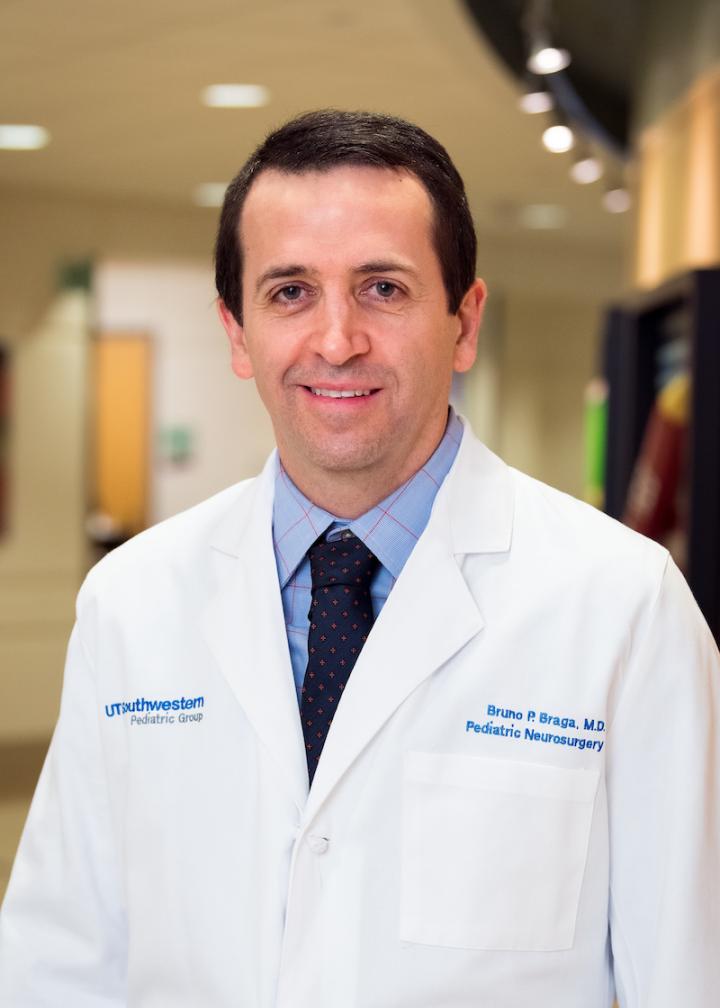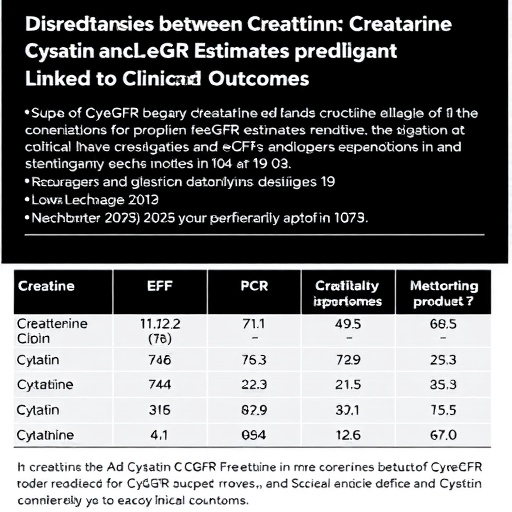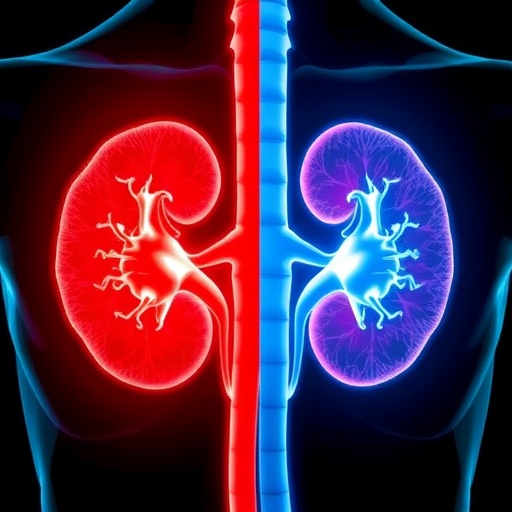New protocol for managing this rare condition can identify its cause and prevent repeat strokes

Credit: UT Southwestern Medical Center
DALLAS – Feb. 11, 2021 – Fusing the neck’s top two vertebrae can prevent repeat strokes in children with bow hunter syndrome, a rare condition that affects a handful of U.S. pediatric patients each year, UT Southwestern researchers suggest in a recent study. The finding, published online in Child’s Nervous System, offers a new way to treat these children and protect them from potentially lifelong neurological consequences.
Bow hunter syndrome – so named because of the head’s position when a person is shooting an arrow – is a condition affecting children and adults in which turning the head compresses blood vessels supplying the back of the brain from the vertebral artery. In adults, this condition is usually caused by a bone spur on the neck and presents with temporary symptoms of fainting, dizziness, headache, or tinnitus that resolve when the head turns back to a neutral position.
But for children with bow hunter syndrome, the cause is often unclear, and they have a far different and more serious presentation, explains study leader Bruno P. Braga, M.D., assistant professor of neurological surgery and pediatrics at UTSW and an attending physician at Children’s Health. This condition is only discovered when these young patients suffer a tear in the vertebral artery, which spills out blood clots that subsequently cause a stroke. Even after this tear heals, it leaves a weak spot that is vulnerable to re-tearing and potentially causing additional strokes.
“Strokes in children are exceedingly rare, and those caused by bow hunter syndrome are even rarer,” says Braga, also a member of the Peter O’Donnell Jr. Brain Institute. “Because this condition is so uncommon, it is often underdiagnosed. In addition, the best way to treat it and prevent subsequent strokes has been unknown.”
In the study, Braga and his colleagues outline a new method that they developed at UTSW and Children’s Health that they used to prevent repeat strokes in 11 children with bow hunter syndrome. These patients, ranging in age from 18 months to 15 years, were all diagnosed with a stroke after showing a combination of neurological symptoms, such as vomiting, headache, impaired coordination, and dizziness.
After tracing the cause of their strokes to a tear in the vertebral artery at the top of the neck, doctors prescribed the standard treatment: placing these patients in a neck brace and giving them anti-clotting drugs, which help the artery to heal. Most children with this type of stroke are not investigated further and its cause is never discovered; consequently, many can have recurrent strokes. To see if the tear was caused by bow hunter syndrome, Braga and his colleagues tested the children after three months using a dynamic angiogram, a special type of X-ray that provides a map of the blood’s circulation during head rotation. When these patients’ heads turned gently from side to side, the researchers saw compression in one or both of their vertebral arteries at the site of the previous tear – a hallmark of bow hunter syndrome. Most importantly, their study identified one specific segment and configuration of the vertebral artery that is highly suggestive of the disease.
To alleviate this compression and help prevent a subsequent stroke, Braga and his colleagues fused the top two vertebrae using surgical screws. Although spinal fusion is often performed for other conditions in children, such as scoliosis, it had rarely been used for bow hunter syndrome, Braga says.
Possible risks and complications from the procedure include injury to the vertebral artery or spinal cord, leading to stroke or spinal cord injury, infection, abnormal growth of the spine, inability to fully rotate the neck, or need for revision surgery.
The fusions were successful in each of the children, with minimal blood loss and just one post-surgical complication – a superficial wound infection treated with antibiotics. None of the children had blood vessel or neurological injuries. Although each child was on anti-clotting therapy after their stroke and leading up to surgery, they all discontinued this therapy just before surgery and never used it again. Interestingly, the researchers note, patients younger than 10 had no apparent restrictions in head rotation after surgery.
Over up to five years of follow-up, none of these patients has had a repeat stroke, Braga says – suggesting that spinal fusion could offer a permanent solution to protect young patients with bow hunter syndrome from future strokes.
“Avoiding a second stroke is infinitely better than treating a second stroke,” Braga says. “Our new protocol could offer a lasting way to prevent pediatric bow hunter syndrome patients from a further devastating neurological event.”
###
Other researchers who contributed to this study include Rafael Sillero, Rosalina M. Pereira, Dale M. Swift, Nancy K. Rollins, Amy J. Hogge, and Michael M. Dowling, all of UTSW/Children’s Health; and Kamran Urgun of University of California, Irvine.
Media Contact
UT Southwestern Medical Center
[email protected]




